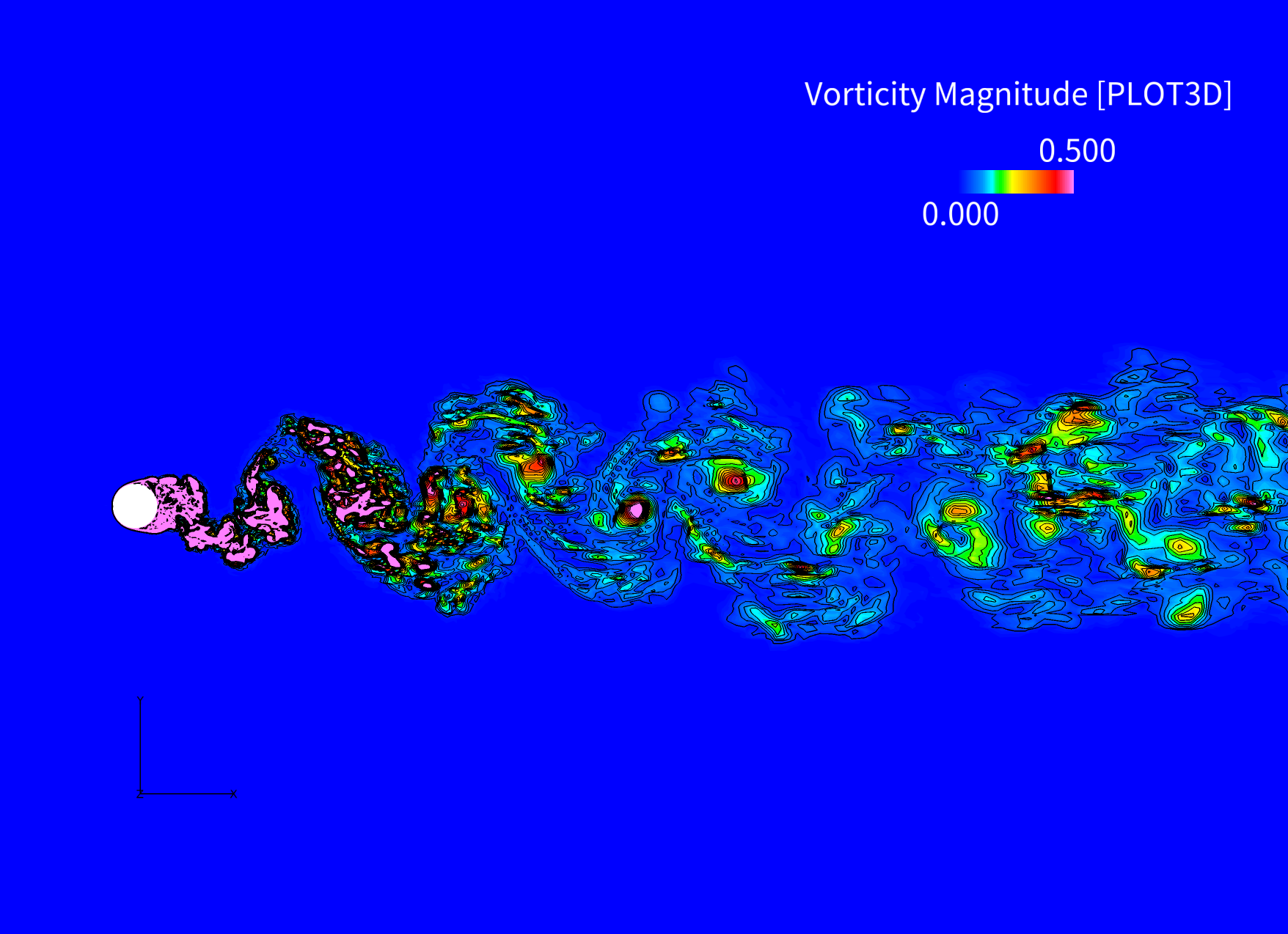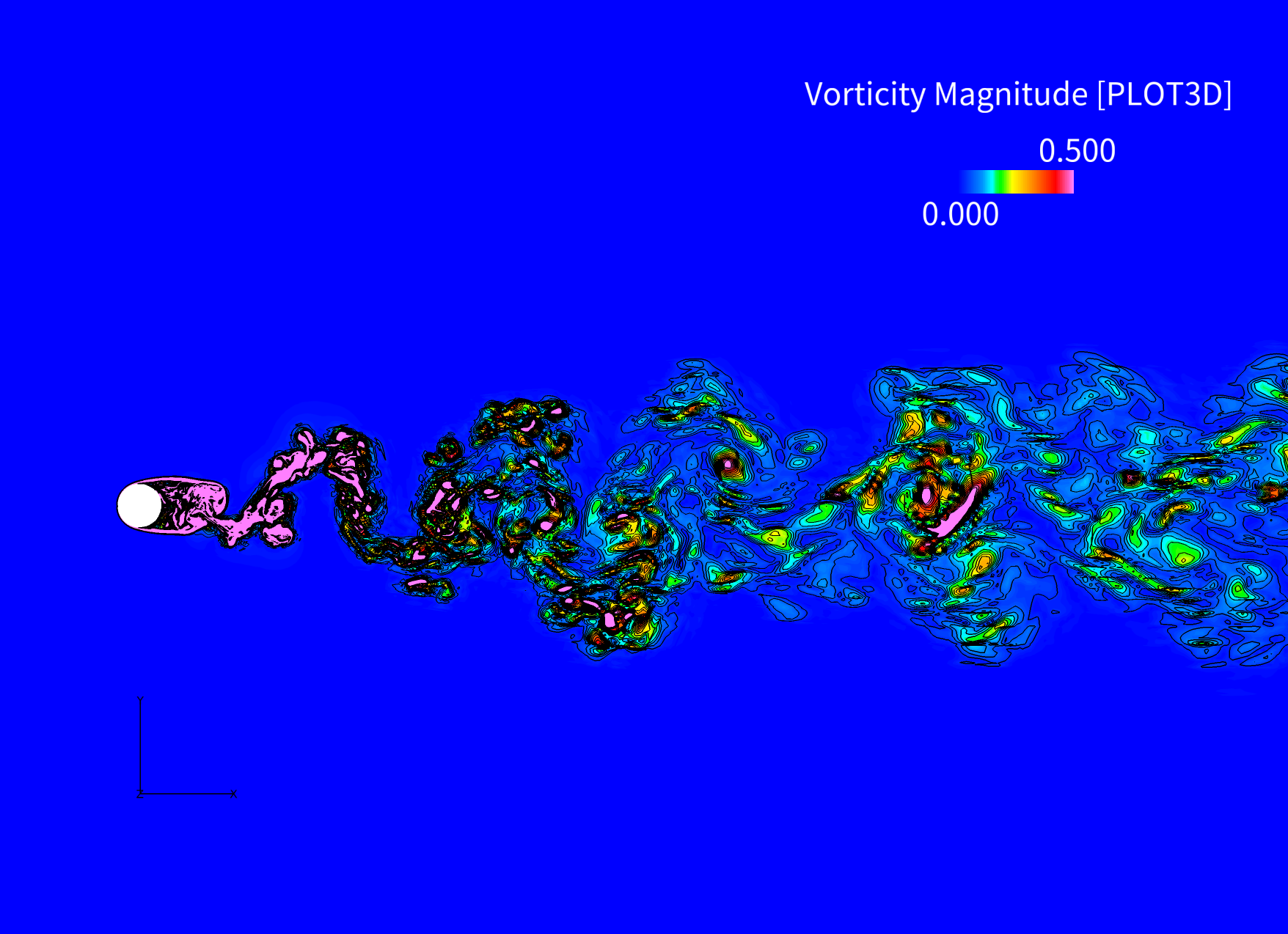Study of very high-order unstructured mesh methods for LES of high Reynolds number flows around complicated geometries
JAXA Supercomputer System Annual Report April 2020-March 2021
Report Number: R20EACA38
Subject Category: JSS Inter-University Research
- Responsible Representative: Hiroyuki Asada, Depatment of Aerospace Engineering, Tohoku University
- Contact Information: Hiroyuki Asada(h.asada@tohoku.ac.jp)
- Members: Hiroyuki Asada
Abstract
The main objective of this study is to develop a solver based on the discontinuous Galerkin (DG) method to realize high fidelity large eddy simulation (LES) of high Reynolds number flows around complicated geometries
Reference URL
N/A
Reasons and benefits of using JAXA Supercomputer System
LES using the DG method requires the high number of computational cells, and thus massively parallel computing with a super computer is necessary. Additionally, the DG method is suitable for the massively parallel computing because of its high execution efficiency on the super computer.
Achievements of the Year
The 8th-order DG method is developed and applied to LES of turbulent flows around a cylinder, and the applicability of the developed high-order DG method to LES is investigated. It is well known that the numerical instability appears when the small scales of turbulent flows are under-resolved by the high-order DG method. This study first attempts to develop the 8th-order DG method in the conventional manner and applied to LES of cylinder flow, and it is found that such numerical instability actually appears. Observing the behavior of the numerical instability, this study considers the discretization method for the viscous terms in the high-order DG method to be one of the reasons of the numerical instability. The 2nd Bassi-Rebay (BR2) method which is widely used in the high-order DG method is carefully examined, and this study found that the substantial approximation in the BR2 method is possible to cause the numerical instability and that the BR1 method without the approximation may be stable. Actually, implementing the BR1 method and applying to LES of cylinder flow, the simulation can be performed without numerical instability. Fig. 1 and Fig. 2 show the computed instantaneous solutions of the cylinder flow obtained by LES with the 4th-order and 8th-order DG method with the BR1 method, respectively.

Fig.1: Computed flowfield obtained by the 4th-order DG method (diameter based reynolds number is 3900).

Fig.2: Computed flowfield obtained by the 8th-order DG method (diameter based reynolds number is 3900).
Publications
N/A
Usage of JSS
Computational Information
- Process Parallelization Methods: MPI
- Thread Parallelization Methods: N/A
- Number of Processes: 700 - 5250
- Elapsed Time per Case: 125 Hour(s)
Resources Used(JSS2)
Fraction of Usage in Total Resources*1(%): 0.00
Details
Please refer to System Configuration of JSS2 for the system configuration and major specifications of JSS2.
| System Name | Amount of Core Time(core x hours) | Fraction of Usage*2(%) |
|---|---|---|
| SORA-MA | 18,640.92 | 0.00 |
| SORA-PP | 0.00 | 0.00 |
| SORA-LM | 0.00 | 0.00 |
| SORA-TPP | 0.00 | 0.00 |
| File System Name | Storage Assigned(GiB) | Fraction of Usage*2(%) |
|---|---|---|
| /home | 2.38 | 0.00 |
| /data | 2,441.41 | 0.05 |
| /ltmp | 488.28 | 0.04 |
| Archiver Name | Storage Used(TiB) | Fraction of Usage*2(%) |
|---|---|---|
| J-SPACE | 0.00 | 0.00 |
*1: Fraction of Usage in Total Resources: Weighted average of three resource types (Computing, File System, and Archiver).
*2: Fraction of Usage:Percentage of usage relative to each resource used in one year.
Resources Used(JSS3)
Fraction of Usage in Total Resources*1(%): 0.14
Details
Please refer to System Configuration of JSS3 for the system configuration and major specifications of JSS3.
| System Name | Amount of Core Time(core x hours) | Fraction of Usage*2(%) |
|---|---|---|
| TOKI-SORA | 758,497.79 | 0.16 |
| TOKI-RURI | 0.00 | 0.00 |
| TOKI-TRURI | 0.00 | 0.00 |
| File System Name | Storage Assigned(GiB) | Fraction of Usage*2(%) |
|---|---|---|
| /home | 2.38 | 0.00 |
| /data | 2,441.41 | 0.04 |
| /ssd | 23.84 | 0.01 |
| Archiver Name | Storage Used(TiB) | Fraction of Usage*2(%) |
|---|---|---|
| J-SPACE | 0.00 | 0.00 |
*1: Fraction of Usage in Total Resources: Weighted average of three resource types (Computing, File System, and Archiver).
*2: Fraction of Usage:Percentage of usage relative to each resource used in one year.
JAXA Supercomputer System Annual Report April 2020-March 2021


